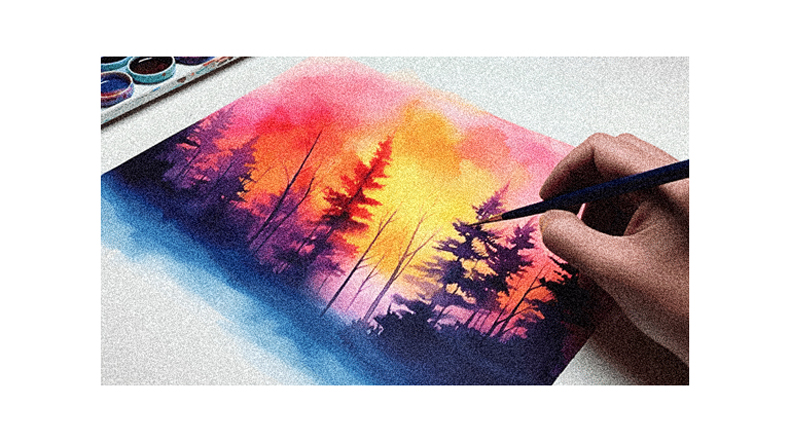As an artist, I’m always looking for ways to push the boundaries of my watercolor paintings. It’s not enough to master the basics; I want to take my artwork to new heights.
I’m thrilled to share this article on advanced watercolor techniques. From experimenting with different inks to creating unique textures, we’ll explore various techniques that will challenge and inspire even the most seasoned artists.
So, let’s dive in and elevate our watercolor skills together!
Layering and Glazing Techniques
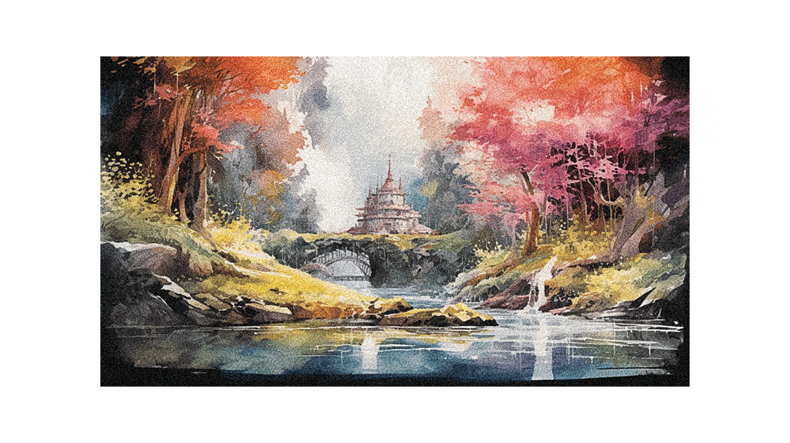
As an artist, I’ve found that layering and glazing techniques can greatly enhance the depth and luminosity of my watercolor paintings.
By building up multiple layers of transparent washes, I can create a sense of depth and dimension in my artwork. Each layer adds richness and complexity to the colors, creating a more vibrant and captivating final piece.
Additionally, glazing techniques allow me to create subtle shifts in tone and color, adding a luminous quality to certain areas of the painting. I can achieve this by applying a thin, transparent layer of paint over dried layers, allowing the underlying colors to shine through.
These techniques have revolutionized my watercolor practice and opened up a new world of creative possibilities.
Wet-on-Wet Blending
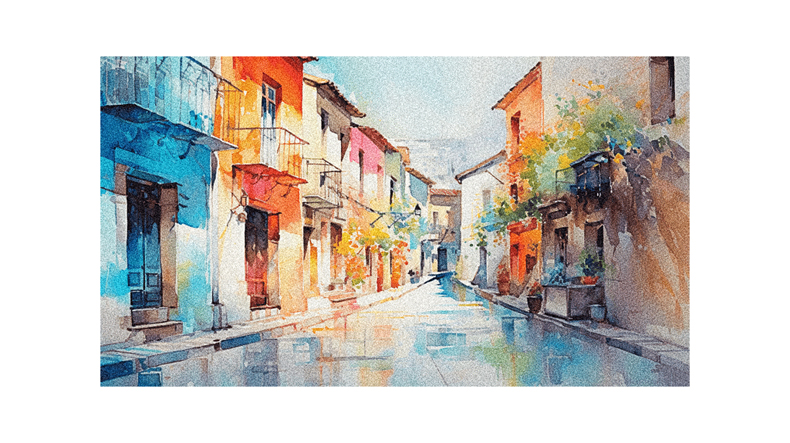
Using wet-on-wet blending in watercolor painting allows me to achieve seamless and fluid transitions between colors. It’s like watching the colors dance and merge effortlessly on the paper, creating beautiful gradients and soft edges.
Here are two techniques that I often use to create stunning effects:
- Layering: The colors mix and mingle by applying a layer of wet paint on top of another wet layer, creating vibrant and harmonious blends. It’s like the colors are playing together, creating a symphony of hues.
- Blooming: This technique involves adding water to a wet wash, allowing the pigment to spread and create delicate blooms. It’s like magic unfolding before my eyes as the colors bloom and blend into each other, creating ethereal and dreamy effects.
With wet-on-wet blending, I can bring life and movement to my watercolor paintings, capturing the essence of the subjects in a truly captivating way.
Dry Brush and Texture Techniques
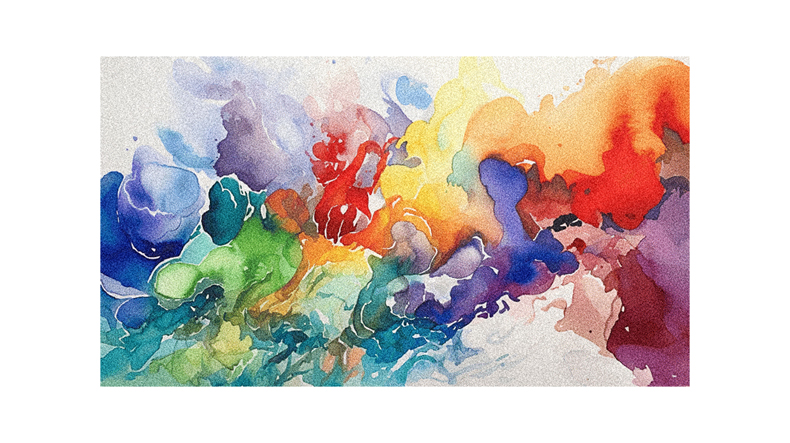
I love experimenting with dry brush and texture techniques in my watercolor paintings to add depth and dimension to my artwork.
Dry brush technique involves using a brush with minimal water and pigment to create texture and detail. By dragging the dry brush across the paper, I can create rough textures and add fine lines and details to my paintings. This technique allows me to achieve a sense of realism and bring my subjects to life.
Additionally, I enjoy exploring various texture techniques, such as using salt, plastic wrap, or sponges to create interesting patterns and effects. These techniques add visual interest and make my paintings more dynamic and engaging.
Masking and Resisting Methods
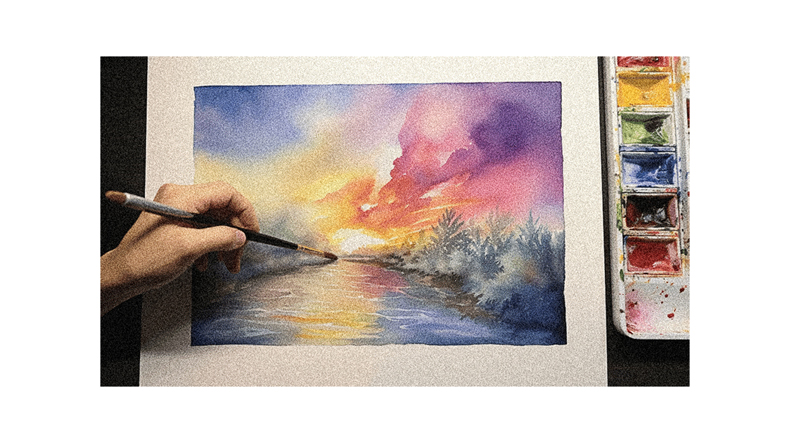
One technique that can be used in watercolor painting is masking and resisting methods, which allow for creating unique effects and preserving certain areas in the artwork.
- Masking Fluid: By using masking fluid, I can protect specific areas of the paper from being painted over, allowing me to create crisp and clean edges or preserve highlights in my painting.
- Wax Resist: Applying wax to the paper before painting creates a barrier that repels the watercolor pigment, resulting in interesting textures and patterns as the paint flows around the wax.
I can add depth and dimension to my watercolor paintings by employing these masking and resisting methods, creating visually captivating and dynamic artworks.
These techniques allow me to experiment and explore different effects, making the process of watercolor painting even more exciting and enjoyable.
Creating Depth and Dimension
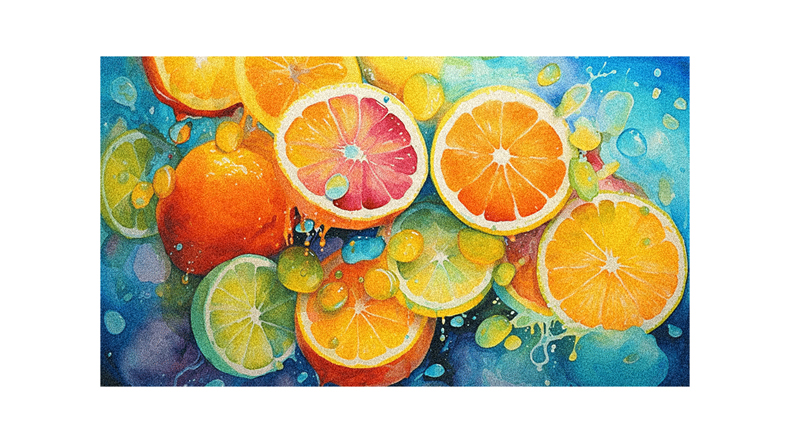
Adding shadows and layering colors effectively creates depth and dimension in watercolor paintings. By strategically placing shadows in your composition, you can give the illusion of objects receding into the background or protruding from the surface.
Shadows can be achieved by diluting your paint to a lighter value and applying it in areas where the light source is blocked.
Layering colors also adds depth to your artwork. Start with lighter washes and gradually build up darker tones, allowing each layer to dry before adding the next. This technique creates a sense of depth as the overlapping layers create a sense of distance.
Experiment with these techniques to bring your watercolor paintings to life and make them visually captivating.
Exploring Color Harmonies
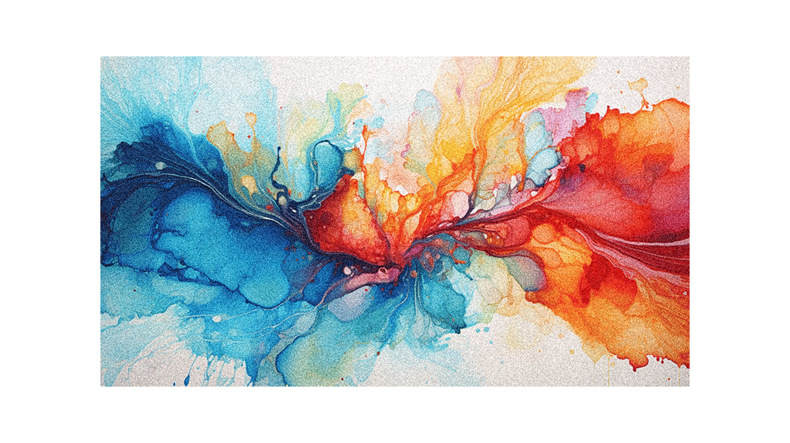
Exploring color harmonies can truly elevate the visual impact of your watercolor paintings. You can create breathtaking and harmonious compositions by understanding and experimenting with different color combinations.
Here are two sub-lists that will help you imagine the possibilities:
Analogous Color Harmonies:
- Imagine a painting with a range of blues, from cerulean to ultramarine, seamlessly transitioning into shades of green, like viridian and sap green. This analogous color scheme creates a soothing and serene atmosphere, reminiscent of a peaceful landscape.
- Picture a vibrant bouquet of flowers in various shades of red, orange, and yellow. By using analogous colors, such as cadmium red, cadmium orange, and lemon yellow, you can create a warm and energetic composition that captures the essence of a sunny garden.
Complementary Color Harmonies:
- Envision a still life painting with a deep blue background, and a prominently placed orange pumpkin as the focal point. By using complementary colors, like cobalt blue and cadmium orange, you can create a striking and visually dynamic composition that captures the viewer’s attention.
- Picture a serene seascape with a clear blue sky above and a calm ocean below. By using complementary colors, such as cerulean blue and burnt sienna, you can create a sense of balance and harmony, as the warm and cool tones interact with each other.
Exploring color harmonies opens up a world of possibilities in watercolor painting, allowing you to create captivating and visually stunning artworks.
Incorporating Mixed Media Elements
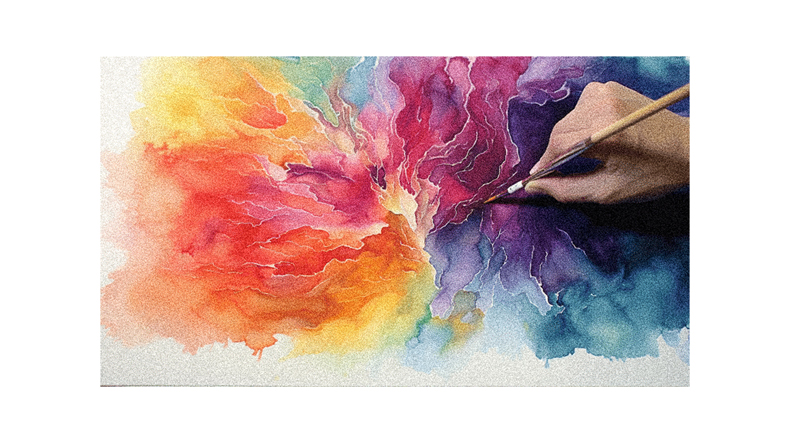
Luckily, I’ve discovered that incorporating mixed media elements into my watercolor paintings adds a unique and dynamic quality. By combining different mediums such as ink, collage, or pastels, I can create textures, depth, and visual interest that can’t be achieved with watercolor alone.
For example, I love using ink to add intricate details and bold lines to my paintings or incorporating collage elements to create interesting textures and layers.
The possibilities are endless when it comes to mixing different media, and it allows me to push the boundaries of traditional watercolor painting. It adds a sense of experimentation and creativity to my artwork, and I enjoy the process of exploring new techniques and seeing how they enhance my watercolor paintings.
Achieving Realistic Water Effects
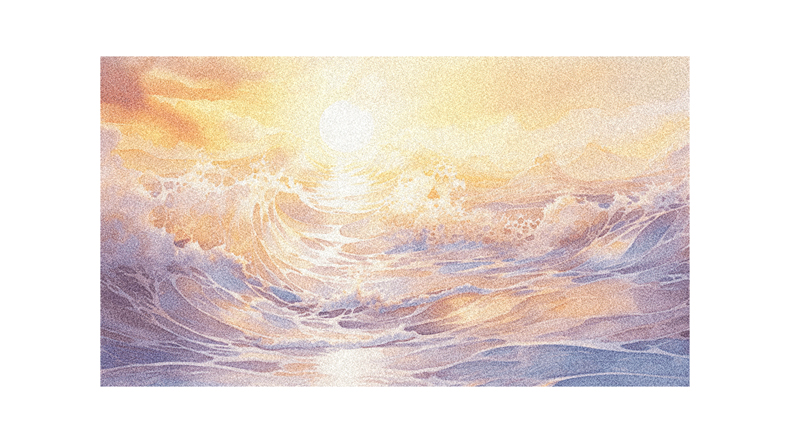
How can I achieve realistic water effects in my watercolor paintings?
There are several techniques that can help create the illusion of water in your artwork:
Creating movement:
- Use flowing brushstrokes to mimic the motion of water.
- Incorporate splattering or spraying techniques to capture the splashes and droplets.
Reflecting light:
- Leave areas of white paper or use masking fluid to preserve highlights.
- Add subtle touches of opaque white paint to suggest the sparkle and shine of water.
Mastering Transparent and Opaque Washes
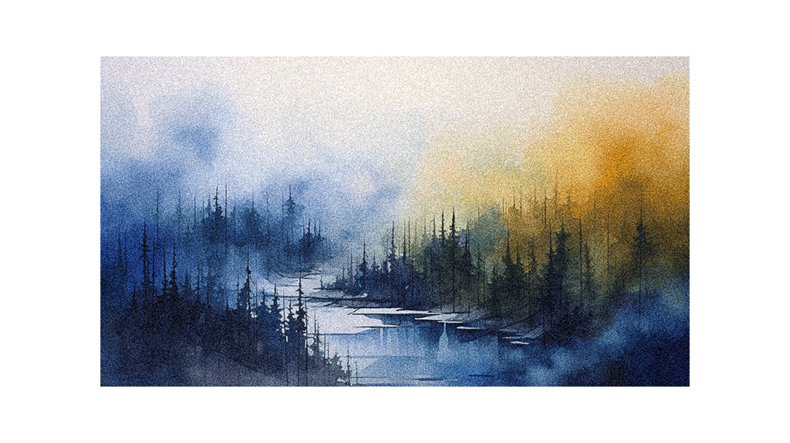
Regarding watercolor painting, I often experimented with different techniques to master the art of creating transparent and opaque washes.
Transparent washes are perfect for building up layers of color and creating subtle nuances in a painting. To achieve this, I dilute my watercolor pigments with water and apply the washes in thin layers, allowing the underlying layers to show through.
On the other hand, opaque washes are great for adding bold and vibrant areas of color. I use less water and more pigment to create these washes, resulting in a more solid and opaque appearance.
Mastering the balance between transparent and opaque washes is key to creating depth and dimension in watercolor paintings.
Experimenting With Different Brush Strokes

To enhance the texture and visual interest of my watercolor paintings, I love experimenting with different brush strokes. Here are some techniques that I enjoy using:
- Creating delicate, wispy strokes that mimic the movement of grass swaying in the wind.
- Using broad, bold strokes to depict the rough texture of tree bark or the crashing waves of the ocean.
- Alternating between short, quick strokes and long, sweeping strokes to add depth and dimension to my paintings.
- Layering thin, translucent strokes to build up layers of color and create a sense of light and shadow.
I can bring my paintings to life with each brush stroke and infuse them with emotion and energy. It’s exciting to explore the endless possibilities that different brush strokes can offer, and I’m always amazed by the unique effects that I can achieve.
Creating Dynamic Skies and Clouds
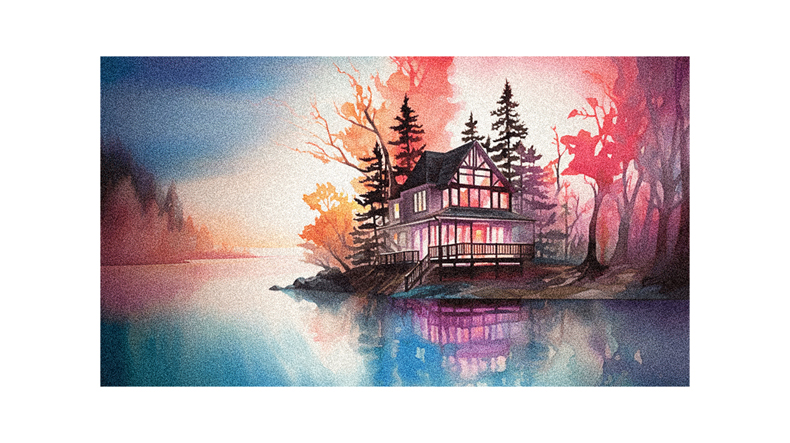
I like experimenting with different watercolor techniques to create dynamic skies and clouds. One of my favorite techniques is wet-in-wet painting. I first wet the paper with clean water and then drop in the desired colors for the sky and clouds. The wet surface allows the colors to blend and create soft, blended edges.
I also like to use a dry brush technique to add texture to the clouds. By using a brush with minimal water and pigment, I can create the illusion of fluffy clouds with varying levels of transparency.
Another technique I enjoy is splattering. By flicking paint onto the paper with a brush or toothbrush, I can create a speckled effect that mimics the appearance of distant clouds.
Enhancing Details With Fine Lines and Splatters
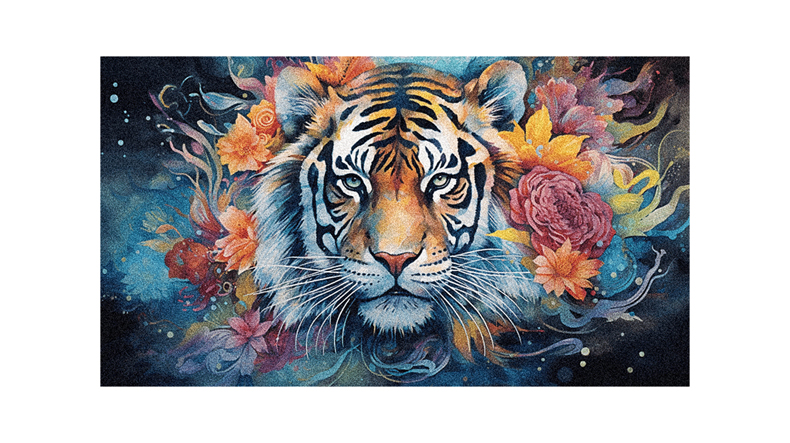
I love using a fine brush to add intricate details and splattering techniques to enhance the texture and visual interest in my watercolor paintings. It allows me to create delicate lines and tiny dots that bring my artwork to life.
When I use a fine brush to add details, I can create realistic textures like the fine fur on an animal or the intricate patterns on a piece of fabric.
Splattering techniques, on the other hand, add a sense of movement and energy to my paintings. By flicking paint onto the paper with a brush or toothbrush, I can create a speckled effect that mimics the look of rain or snow.
These techniques add depth and dimension to my watercolor paintings, making them more visually captivating.
Adding Texture With Salt and Alcohol
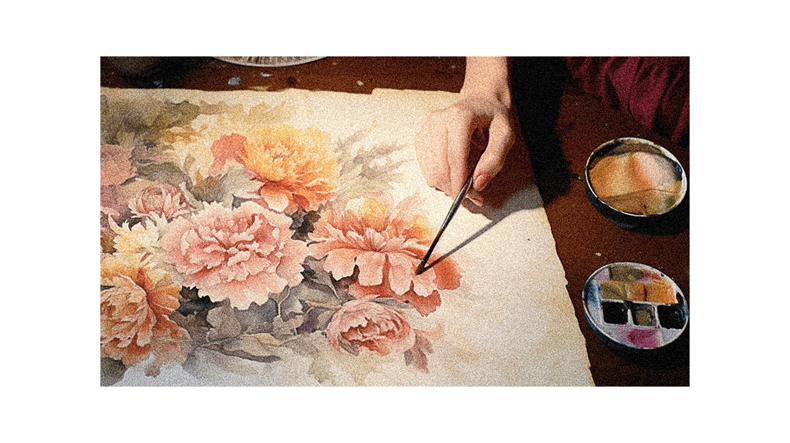
When adding texture to my watercolor paintings, I experiment with salt and alcohol to create unique effects. Salt can create interesting patterns and textures by absorbing the water and pigment from the paint. I sprinkle a small amount of salt onto the wet wash and let it sit for a few minutes before gently brushing it off.
The salt leaves behind a beautiful texture that adds depth and dimension to the painting. Alcohol, on the other hand, can create interesting blooms and textures by lifting and spreading the pigment. I apply a few drops of alcohol onto the wet wash and watch as the colors blend and create unexpected patterns.
It’s a fun and experimental technique that adds a touch of excitement to my watercolor paintings.
Capturing Light and Reflections
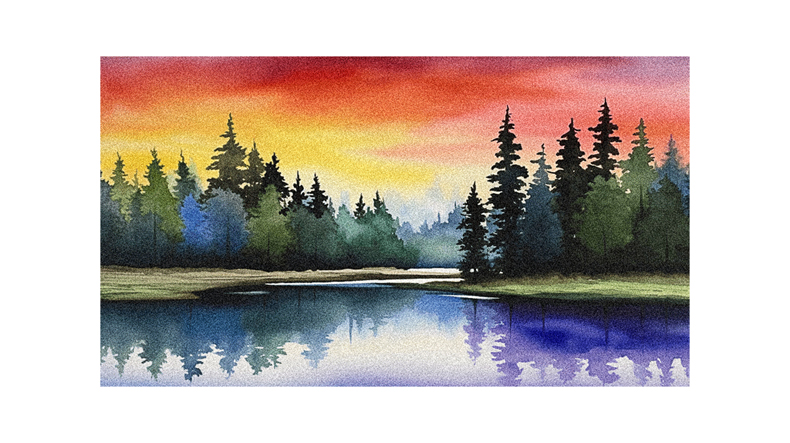
As an artist, I strive to capture the delicate interplay of light and reflections in my watercolor paintings. To bring these elements to life, I employ various techniques to create vivid imagery on the paper.
Here are some methods I use:
- Layering Washes: By building up layers of transparent washes, I can achieve a luminous effect that mimics how light interacts with different surfaces.
- Wet-on-Wet Technique: This technique involves applying wet paint onto wet paper, resulting in soft and blended edges that beautifully capture the reflection of light on water or shiny surfaces.
These techniques allow me to capture the subtle nuances of light and reflections, adding depth and dimension to my watercolor paintings.
Pushing the Boundaries of Traditional Watercolor
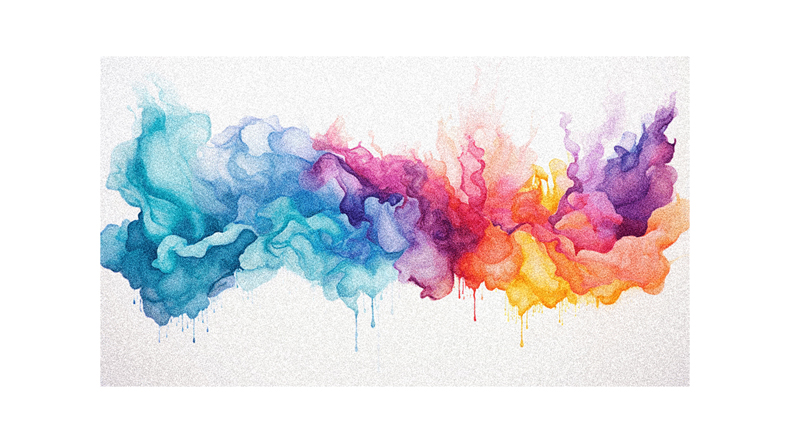
How can we push the boundaries of traditional watercolor and explore new possibilities in our artwork?
As an artist, I believe it’s essential to continually experiment and challenge ourselves to discover fresh techniques and approaches.
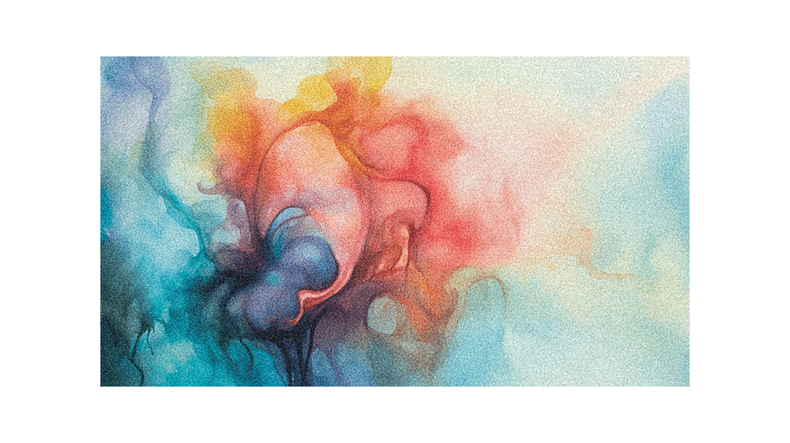
One way to push the boundaries of traditional watercolor is by incorporating mixed media elements into our paintings. By combining watercolor with other mediums like ink, pastels, or collage, we can create unique textures and effects that add depth and interest to our artwork.
Additionally, we can explore unconventional surfaces for watercolor, such as wood or fabric, to create unexpected and captivating pieces.
Embracing experimentation and thinking outside the box allows us to break free from traditional constraints and unlock the full potential of watercolor as a medium.
Follow us on Pinterest for more tips, tutorials, and artist reviews!

